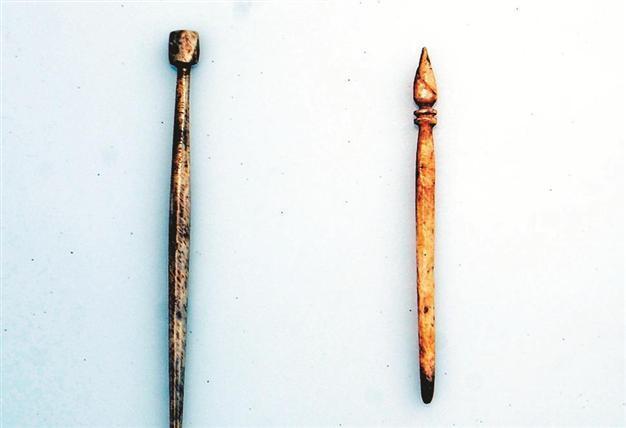Excavation reveals ancient hair fashion
ÇANAKKALE - Anatolia News Agency

Ancient hairpins, which were found in Assos show that early women were stylish just like today’s women.
Archaeologists conducting excavations in the northwestern province of Çanakkale’s Ayvacık district have discovered hairpins thought to be over two millennia old, proving that ancient societies also had a pronounced desire to “look good,” according to researchers.“The hairpins show us that there was a high demand for them in ancient times. Maybe their existence shows us that there was a small atelier for hair pin production here,” said Professor Nurettin Arslan of Çanakkale Onsekiz Mart University, the head of the excavations, adding that women of the age placed great importance in being well-groomed and stylish.
Arslan said the hairpins had been found in many places in the ancient city but that the most were in the agora, which has been the site of the school’s ongoing dig.
Noting the unique designs on the hairpins, Arslan said, “They date back to the second century B.C. They are nearly 2,200 year old.”
The hairpins were made of various animal bones, the professor said. “Such a material was already a natural one that was used in the ancient era. It was used not only for hairpins but also for necklaces and small spoons. We have found some examples of them in previous excavations.”
Arslan said hairpins were the easiest way to differentiate between servants and free women in ancient Greek society.
“Dresses [for both sets of women] were the same, but we know that servants had short hair and free women had long hair. We also know that hair models were different in every century. When dating sculptures and coins, we sometimes look at their hair models. In this way, we have chance to make a dating,” he said.
















